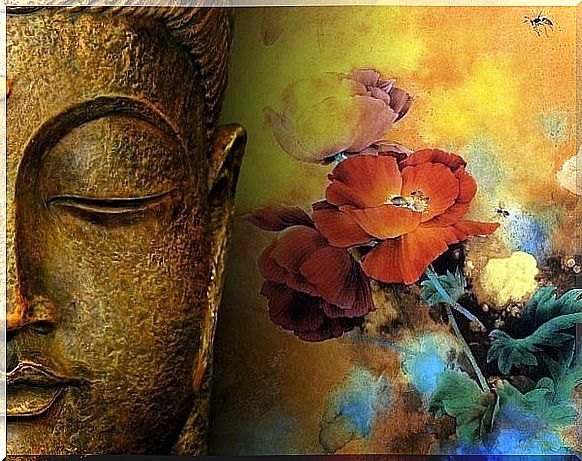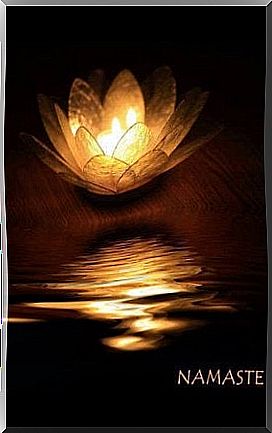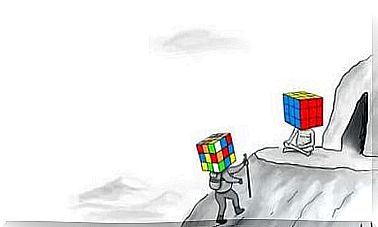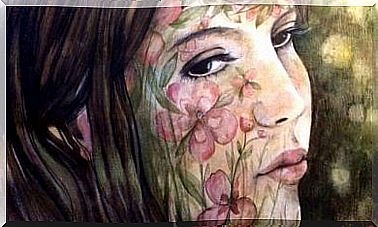Namasté: The Value Of Gratitude And Recognition

Namasté is much more than just a word that comes from beautiful, ancestral Sanskrit. It contains a number of concepts that have become universal and have therefore crossed boundaries.
It goes beyond a greeting and the usual farewell used in the practice of yoga; the term contains, in its ancient roots, an essence that should be pumped through the heart of humanity every day. However, it seems that in our consumer society, addicted to fashion and fads, we have lost the true meaning and intrinsic value of the word.
Is a sense of gratitude practiced today with noble humility? Do we recognize others as we recognize ourselves? This is what, deep down, really lies in the meaning of the word “namasté,” so we would like to talk about it today and the values that we don’t see so easily in our everyday lives.
Namasté, I bow to you and acknowledge you
In Western society, the word “namasté” is closely associated with yoga. However, those who are acquainted with the always interesting culture and religion of South Asia will know that this term is widely used in the daily life of Hindus, Buddhists and all people who have incorporated it into their ritual of greetings and goodbyes – this word, full of symbolism, which also encompasses a universal meaning of thanks.
By the way, it is worth pointing out that it is not a single word, but a combination of two separate concepts: “ namas ”, which can be translated as “ greeting” or “ reverence” and whose root is “nam”. , meaning “ bend ” or “ lean ”; and “ te ”, which forms a personal pronoun to create the phrase “ I bow to you ”.
This idea in turn characterizes the concept of spirituality representing the culture, that in fact we are all one with the universe.
So, what does this mean?
Unit
If we are all part of the same entity, what affects you affects me too. Therefore I recognize others as part of myself; therefore I show my respect and the word namasté is symbolized with the gesture of hands pressed together.
By doing this, we communicate to the other person that we are equals, we are the same. It is also interesting to keep in mind that in Hinduism the right hand represents deity (the spiritual aspect) while the left hand represents the earthbound worshiper who bows to this deity.
Gratitude
By saying the word namaste, we thank the other person and acknowledge him for what he has done. However, by thanking another, you are also acknowledging yourself, as both of you have had a part in creating a mutual connection.
That is, if I help a friend to solve a problem and he or she thanks me, we have both benefited from the situation: he or she has a solved problem and I have done a noble deed. Together we form a whole where we recognize each other in equal measure.

Namasté, a value to integrate into our daily lives
Maybe you are not religious. You may not even see yourself as a spiritual person capable of using the word namaste from now on. But this is definitely not what we are looking for. We just want you to think about the values involved in this word: gratitude and recognition.
How can we integrate these values into our daily lives?
- To apply your sense of gratitude, you must first learn to be humble, but beware – humility does not mean giving everything to others and keeping nothing to yourself. Being humble means knowing how to judge our own limits, admit our mistakes and learn to enjoy and appreciate the simple things while always keeping an open mind and realizing that we can learn from others and get help from them , with what they have to offer us. He who is humble is thankful, for he understands, like everyone else, the true value of things.
- Respect the people around you, respect nature and don’t forget to respect yourself too.
- Appreciate your friends and family, listen and learn from every experience. Honor everyone and yourself as you deserve, as a part of that “everything.”
- Be happy for everything you do and for everything you receive from others and your environment, no matter how small it is.
- Be grateful, remember to always be grateful for everything you see, everything you feel and everything you get… Because everything is a part of you, as much as of that wholeness where you can find your true balance.









